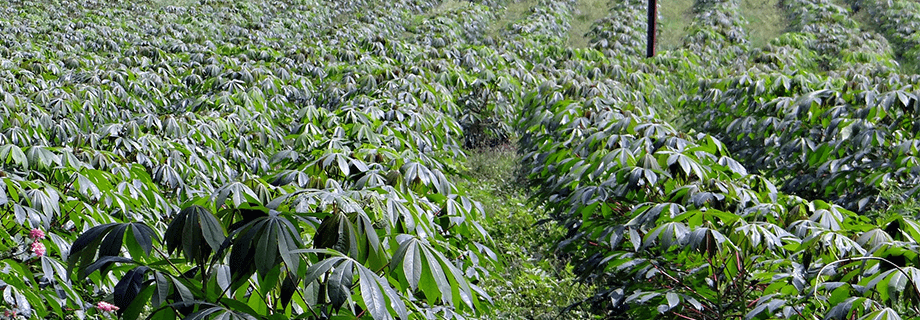Extrusion Improves Cassava-Based Products

Cassava is a major root crop, grown mainly in the developing world. Cassava is mostly a source of starch, and has very little protein (1.4% of raw cassava). It is also low in certain micronutrients. As a result, cassava must be fed with other ingredients to avoid nutrient deficiencies.
Soybeans are a good choice for pairing with cassava, as they are an excellent source of protein and fatty acids from soybean oil.
Extrusion processing, a globally-recognized procedure to make food and feed, has been shown here on the Insta-Pro blog before to be effective at making high-quality products (see here, here, here, here, here, and here).
A recent PhD thesis from South Africa examined the effect of extrusion and heating on cassava alone, and cassava blended with soy flours. In addition, a commercial, ready-to-eat food product was used as a standard. While the results of much R&D were reported in this thesis, I will focus on the effect of extrusion and heating on protein digestibility. Digestibility is a common measure of the amount of particular nutrient that exits the digestive tract and enters the body. In this case, digestibility was measured in the lab (called “in vitro”) after the extruded or heated cassava and soy products were exposed to enzymes, which are also present in the intestine and used for digestion.
The effect of extrusion and heating (boiling for 20 minutes) on protein digestibility is shown in the graph below.
*Commercial, ready-to-eat porridge used; processing conditions unknown
Extrusion resulted in higher protein digestibilities compared with heating in each case. Cassava alone is very low in protein, as mentioned above, and should be fed with other ingredients. This was the purpose of the cassava-soy blends, and as shown in the graph, extrusion improved protein digestibilities in these products beyond the effects due to heating. In addition, extrusion of the cassava-soy mixtures resulted in protein digestibilities that were very similar to the commercial product that served as a standard.
Therefore, extrusion will increase the amount of usable protein in cassava-soy blends, which are used as both food and feed in many parts of the world. Extrusion processing, a globally-recognized procedure to make food and feed, has been shown here on the Insta-Pro blog before to be effective at making high-quality products (see here, here, here, here, here, and here). In addition, high-shear dry extrusion from Insta-Pro International will provide other benefits, such as reducing the amount of naturally-occurring mycotoxins, and reducing antinutrients in soybeans.



